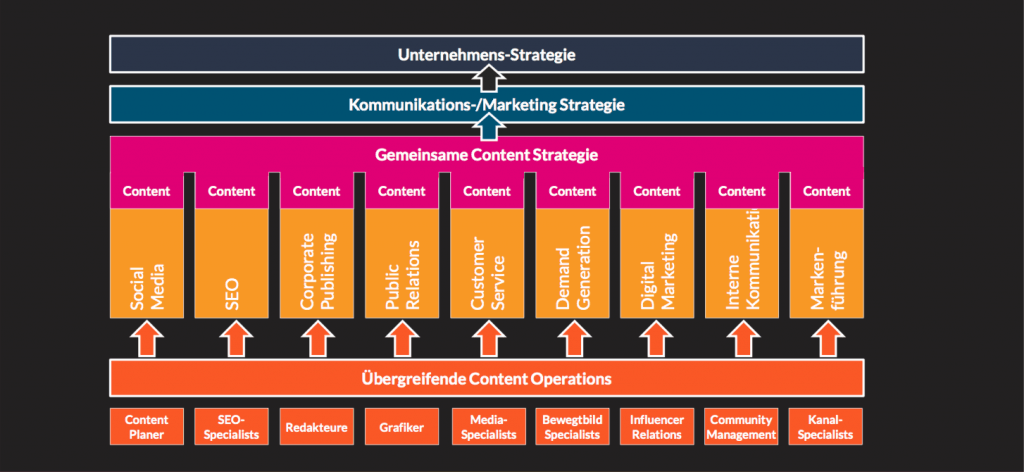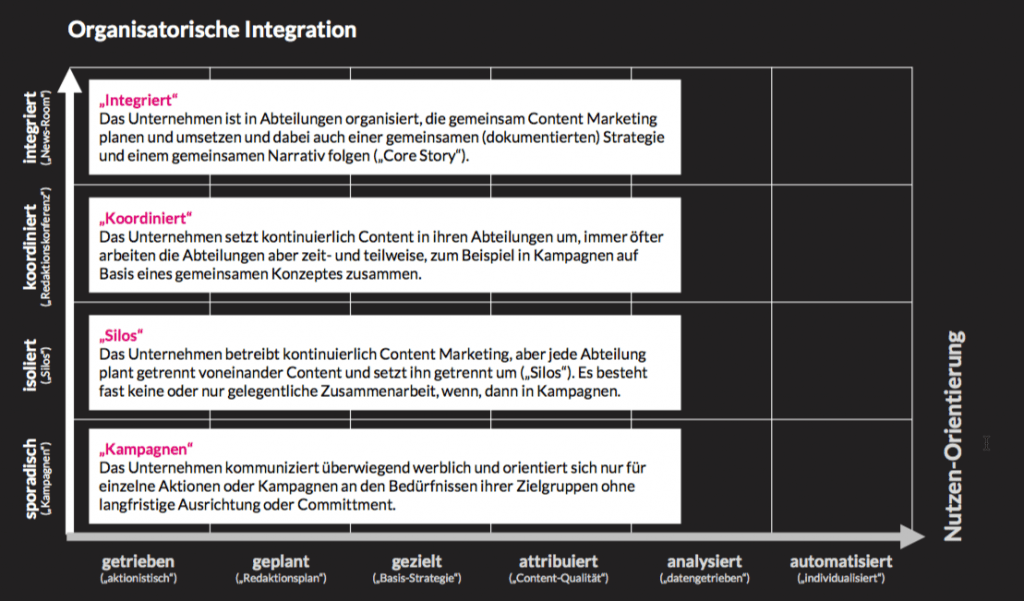
Effects of silos
Such departments are also known as silos - the process of encapsulation is a cost factor for companies that should not be underestimated. Studies such as the one conducted by McKinsey show that such structures in companies make digital transformation more difficult, for example.
This is no different in the context of content strategies and content marketing approaches. Here, different KPIs lead to the departments pursuing partially divergent goals and locking themselves into their silos.

Different departments often have a different view of what purpose the produced content should fulfill - the result is sometimes contradictory KPIs.
Fortunately, the requirements of content marketing reveal this systemic misguided development and point to opportunities for development: Better, cross-departmental collaboration can develop, particularly on communication issues and the associated content processing procedures.
Content is increasingly becoming a connecting element of work processes. For reasons of efficiency, collaboration between departments must be virtually demanded if the connecting character of content in the company is to be recognized.

Departments within a company often produce the same content - a joint content strategy can help to promote new forms of collaboration and thus increase efficiency.
Target image: Organizational integration of communication optimized for customer benefit
The vertical classification answers the question of how well all departments and channels are aligned with a central strategy, story and guideline.

Maturity levels of the organizational integration of content marketing
Companies go through various stages of evolution before content production is optimally integrated into the organization.
Sporadic: campaign-driven communications
'Traditionally' oriented communication units are still very much in the early stages of development: "Content marketing" is only practiced in individual campaigns, there is no long-term approach.
Isolated: Continuous activities in individual departments (silos)
Silo structures operating in isolation do not know what other departments are producing and what communication strategy they are pursuing. In random exchanges, these units learn in passing that another department has produced almost identical content. If at all, there are only silo-related content strategies that contribute to department-specific performance targets.
Coordinated: Regular editorial meetings
Some companies are already more advanced in their content operations and have crossed the threshold from silo production to coordinated information exchange. They try to keep up to date with activities in regular editorial meetings and occasionally strive for synergies in production and planning.
Integrated: a content strategy, uniform planning, shared success
The highest level of internal collaboration is centralized cooperation with a jointly executed communication strategy. Silos are broken down, all departments sit at one table and use a jointly developed content strategy: coordinated KPIs simultaneously ensure that an overarching objective consistently guides department-specific activities.
One implementation of such a strategically integrated form of cooperation within the company can be found in the newsroom concept. There is a content (marketing) strategy that encompasses and involves all departments and is thus supported by everyone.
Outlook
The newsroom concept ensures better collaboration. However, the first step is often about overcoming silos: You can do this by starting to share information about production projects across departments and coordinating communication approaches.
And sometimes a tool such as Scompler can help, because it provides a virtual newsroom as a software solution. This is perhaps the most cost-effective approach before you finally sit at the same table in your company reality.







Write a comment
Your e-mail address will not be published. Required fields are marked with *.